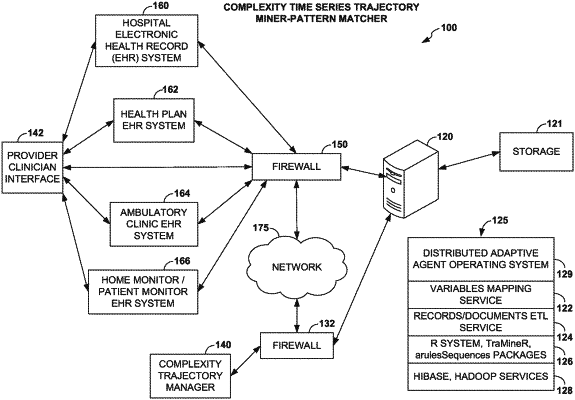| CPC G16H 20/10 (2018.01) [G16H 10/60 (2018.01); G16H 50/20 (2018.01)] | 31 Claims |

|
1. A method, comprising:
for a candidate patient, determining, by a computer processor, a set of health records stored on one or more data stores distributed across multiple Physical locations for a population of reference patients having conditions, multiple episodes, or encounters over a period of time similar to the candidate patient, wherein each reference patient health record forms a reference set of clinical event sequences;
receiving, by the computer processor, candidate patient information associated with the candidate patient;
creating a candidate patient data frame based on the received candidate patient information; and
determining, by the computer processor, an inter-event pattern present in the set of health records of the reference patients based on:
a comparison of the candidate patient data frame and one or more of the reference sets of clinical event sequences,
a matching set of clinical event sequences, and
a set of timeseries trajectory clusters determined by:
(a) performing, on at least one of the one or more data stores, a database scan that uses a sparse-matrix approach to decompose an original search lattice into sub-lattices that are processed independently in distributed memory associated with multiple parallel processors;
(b) computing and applying a multi-cluster model; and
(c) extracting one or more cluster assignments,
wherein each timeseries trajectory cluster has a centroid.
|